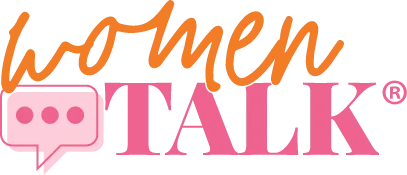Chances are high that we all know someone who has, or has had, breast cancer. Or perhaps you've experienced it first-hand. Although death rates have been decreasing since 1989, with women under 50 seeing larger decreases, almost 41,000 women in our country are expected to die from it in 2018, and one in eight will be diagnosed with invasive breast cancer in their lifetime.
I experienced it in 1988, when, at age 34, I had my very first baseline mammogram that revealed an unexpected result: a cancerous lump. Although breast cancer under the age of 40 was—and still is—rare, at that time (fortunately for me) baseline mammograms were recommended by the American Cancer Society for women between 35 and 39.
I believe that mammogram saved my life, one reason being that breast cancer in women under 40 can be more aggressive and has been found in some studies to be biologically different than breast cancer in older women. Early detection is vital: For women diagnosed at an early stage, more than 90 percent will survive.
Since 1988 (and even prior to that) guidelines and recommendations for breast cancer screening have flip-flopped, just as my emotions did during that difficult time and the years that followed. The change in recommendations occurs as new tests become available, and evidence in favor of, or against, the value of these tests emerges.
As a result, it can be difficult to keep up with the latest recommendations. To make things even more confusing, different professional groups have different recommendations. For example, the U.S. Preventive Services Task Force's latest recommendation is for women to begin at age 50—and to repeat the test every other year. But the Society of Breast Imaging insists that they do not support this and neither does science. They say that annual mammography screening, beginning at age 40, saves the most lives.
Click here to see the various guidelines from seven organizations, provided by the Centers for Disease Control and Prevention.
There are other conflicting messages as well: Mammograms expose you to too much radiation; there are too many false-positives or too many missed tumors; mammograms are useless for women with dense breasts; they don't save lives; and you should be screened based on your own personal risk.
Still, mammograms remain the "gold standard" for screening and the best way to detect breast cancer at its earliest stages in most women.
My argument for mammograms might be a personal one, and I urge all women to follow their own personal path and push for what they feel is necessary to ensure the health of their breasts.
I had no personal risks, and I was what many professionals considered "too young" to have breast cancer. Yet, it happened—and if the guidelines hadn't been what they were back then, I'm not sure it would have been caught.
Learn more about Why Your Breast Cancer Might Be Missed.
True story: When I shared my diagnosis a few years after my surgery and treatment with another woman, the mother of a classmate of my then 5-year old son, she recanted her story of visiting her doctor a week prior because she was concerned about a lump. "He told me I was fine; that I am too young to have breast cancer," she told me. I urged her to seek a second opinion and push for a mammogram.
That mammogram detected something her doctor insisted she need not worry about: breast cancer. (The story has a happy ending. She is alive and well today.)
While it's important for every woman to know what the guidelines are, it's also important for women to know that they need not follow these guidelines to the letter. Although many women aren't starting their mammograms until age 50, you might want to request one earlier or, at the very least, have your breasts examined if you suspect there might be an issue.
Your risks are higher for developing breast cancer if:
- You have a personal family history.
- A previous biopsy has found a high-risk lesion.
- You have a history of radiation therapy.
- You carry a BRCA1/BRCA2 mutation.
And don't ignore the warning signs of breast cancer:
- A new lump or mass. Although it's more likely for the lump to be hard with irregular edges, it can be tender, soft or rounded and even painful.
- Swelling in either part of the breast or the entire breast—even if you can't detect a lump.
- Pain or thickening in your nipple or breast skin.
- Nipple or breast skin that is red or scaly.
- Nipple discharge (other than breast milk).
- Swollen lymph nodes under the arm or around the collar bone.


